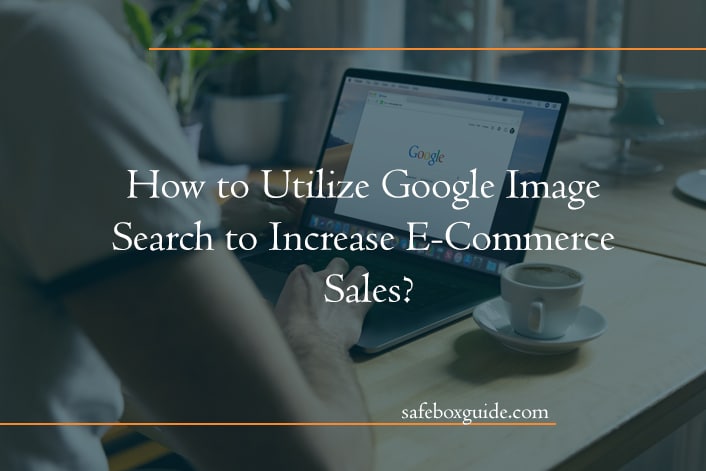In today’s competitive e-commerce landscape, standing out from the crowd is crucial for driving online retail sales. While optimizing product descriptions and using relevant keywords are essential, harnessing the power of visual search can take your e-commerce business to the next level.
One such powerful tool is Google Image Search, which allows users to discover products directly through images. In this blog post, we will explore how you can leverage Google Images Search to boost your e-commerce sales and gain a competitive edge in the market.

Contents
What is the Potential of Google Image Search?
Google Image Search has become an increasingly popular avenue for users to explore and discover products visually. With millions of searches conducted daily, it presents a vast opportunity for e-commerce businesses to showcase their products and attract potential customers. By appearing in Google Images’ search results, you can reach a broader audience, increase brand visibility and ultimately drive more sales.
How to optimize product images for Google Image Search?
To effectively leverage Google’s image search, it is crucial to optimize your product images. By following these best practices, you can enhance the visibility and appeal of your images and increase the chances of attracting potential customers.
Ensure high-quality visual
Begin by having high-quality, visually appealing images that accurately depict your products. Some details you’ll have to pay attention to include image resolution, proper lighting, and capturing multiple angles to provide a comprehensive view to users.
Multiple images that showcase different angles and perspectives of the product enables your users to have a comprehensive view of the item to make informed purchasing decisions. Additionally, it provides more opportunities for your images to appear in search results for different search queries.
Utilize the right image formats
After ensuring that you have high quality images, you will need to ensure that you use the most optimized image formats for Google. Large PNG images no matter how attractive it is will slow your website down, and Google doesn’t like that. Instead, use the best web image formats like WebP and AVIF.
Such modern formats compress images without compromising their quality, which means that your users can enjoy the same high quality visuals with faster and better web browsing experience.
Use descriptive file names
Next, optimizing image file names with relevant keywords can improve their visibility in search results. Instead of using generic names like “IMG4523.jpg”, include descriptive and keyword-rich names. For example, if you are selling a blue cap, a file name like “blue-cap-with-stripes.jpg” is more informative and optimized for search engines.
Include relevant alt text
Alt text attributes provide a textual description of the image, which allows search engine crawlers to understand the content of the visuals. Just as the file names need to be optimized, alt text should include concise and descriptive text that accurately depicts the product.
Incorporate captions and descriptions
If possible, include captions and descriptions for your product images. These additional textual elements provide more context and information to both your users as well as the search engines. Incorporate concise and compelling descriptions that highlight key features, benefits, and unique selling points of the product.
What are other things to take note of when optimizing for Google Image Search?
Image optimization is one of the most important things to consider when trying to rank well for Google Image search, but marketers should also focus on ensuring that their websites are mobile-friendly, include structured data markup, and to continually monitor and optimize performance.
Ensure websites are mobile-friendly
With the increasing number of users accessing the web through mobile devices, it is crucial to optimize your product images for mobile viewing. Ensure that your images are responsive and display well on various screen sizes (plugins can help you with this!) Test the mobile-friendliness of your website to deliver a seamless user experience on mobile devices.
Implement Structured Data Markup
Structured data markup plays a vital role in helping search engines understand and index your product images effectively. By using schema markup specific to products, you can provide essential details such as product name, price, availability, and customer ratings. This additional information can enhance the visibility and relevance of your product images in Google Images Search, leading to increased click-through rates and conversions.

Monitor and optimize performance
As with any strategy, it is crucial to continually monitor the performance or your efforts and make necessary adjustments. Leverage tools like Google Analytics to track the engagement, and conversion rates from Google Image Search.
You can analyze the data to identify trends, understand user behavior, and optimize your strategy accordingly. Regularly review your product images, keywords, and landing pages to ensure they align with the changing demands and preferences of your target audience.
Conclusion
Google image search presents a valuable opportunity for e-commerce businesses to enhance their online visibility, attract more customers, and boost sales. By optimizing product images, implementing a structured data markup, and providing a seamless user experience, you can harness the full potential of Google images search.
We recommend that you continuously stay proactive, monitor performance, and refine your approach to ensure long-term success. Embrace the visual power of Google’s Image Search and watch your e-commerces sales soar!

